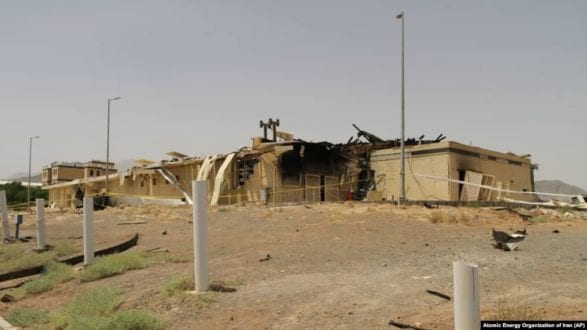Al-Monitor – Two days after Iranian officials said there was an “incident” in an industrial shed at the Natanz uranium enrichment facility, Iranian authorities have admitted serious damage has occurred.
Ali Akbar Salehi, head of Iran’s Atomic Energy Organization (IAEO), spoke to parliament’s National Security and Foreign Policy Commission behind closed doors about the incident. According to the commission’s spokesman, Abufazl Amouee, Salehi said “multiple scenarios about this incident are being studied.” According to Salehi, Amouee said, “Expert groups from security and intelligence sectors have reviewed all aspects” of the fire at Natanz. Iran’s Supreme National Security Council knows the “reasons for the incident but will not state it due to security reasons,” he added.
IAEO spokesman Behrouz Kamalvandi said the shed will be rebuilt “with larger dimensions and better and more advanced equipment.” On the impact of the damage, Kamalvandi said, “It’s possible that this incident will create slowdowns in the medium term in the production and development of advanced machines.” He said they will work day and night to create “more capacities than before.”
According to Kamalvandi, the damaged shed was designed to make advanced centrifuges. He said Iran began work inside the shed after the United States exited the nuclear deal known as the Joint Comprehensive Plan of Action (JCPOA). The capacities for the shed would still have been within the limits of the JCPOA, Kamalvandi added. In response to the US exit of the JCPOA in 2018, Iran restarted segments of its nuclear program.
A number of conservative media outlets speculated that the incident at Natanz was sabotage and called for an Iranian response.
Never miss another story
Sign up for our NewsletterSign Up
Iranian newspaper Farheekhtegan wrote, “Of all the theories, a drone attack or sabotage operation has drawn more attention than other options, especially given that this took place on the anniversary of the Stuxnet attack on nuclear installations in July 2010.” Stuxnet is believed to be a joint US-Israel cyberattack against Iran’s nuclear program that caused significant damage. While the article in Farheekhtegan believes that Stuxnet first appeared in July, it was closer to June that the first signs of it began to appear.
The newspaper continued, “Israel is one of the prime suspects of this operation,” and Iran must show a response to such an attack. Otherwise, “it will be a green light for larger operations” against Iran by Israel.
An article in the Persian daily newspaper Sobhe No said that given the statement by the Supreme National Security Council, it indicates “there are outside” forces involved in the incident at Natanz. The article continued, “Once it is proved, Iran’s response will be firm.” The article stated Iran has demonstrated that its nuclear program is for peaceful purposes, both through the JCPOA and its work with the IAEA.“If the other side crosses red lines and takes advantage of our strategic patience and targets our national interests and security, it will be accompanied by Iran’s firm response,” the article added.
 Shabtabnews In this dark night, I have lost my way – Arise from a corner, oh you the star of guidance.
Shabtabnews In this dark night, I have lost my way – Arise from a corner, oh you the star of guidance.



